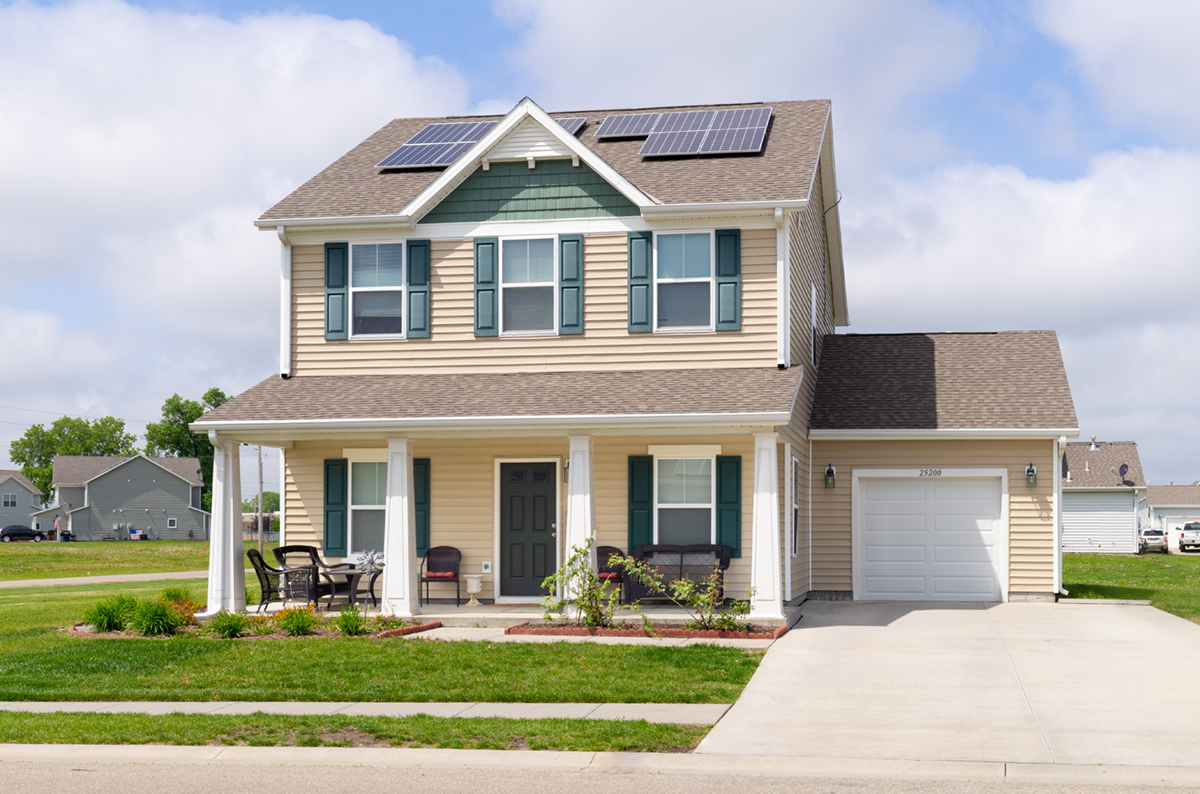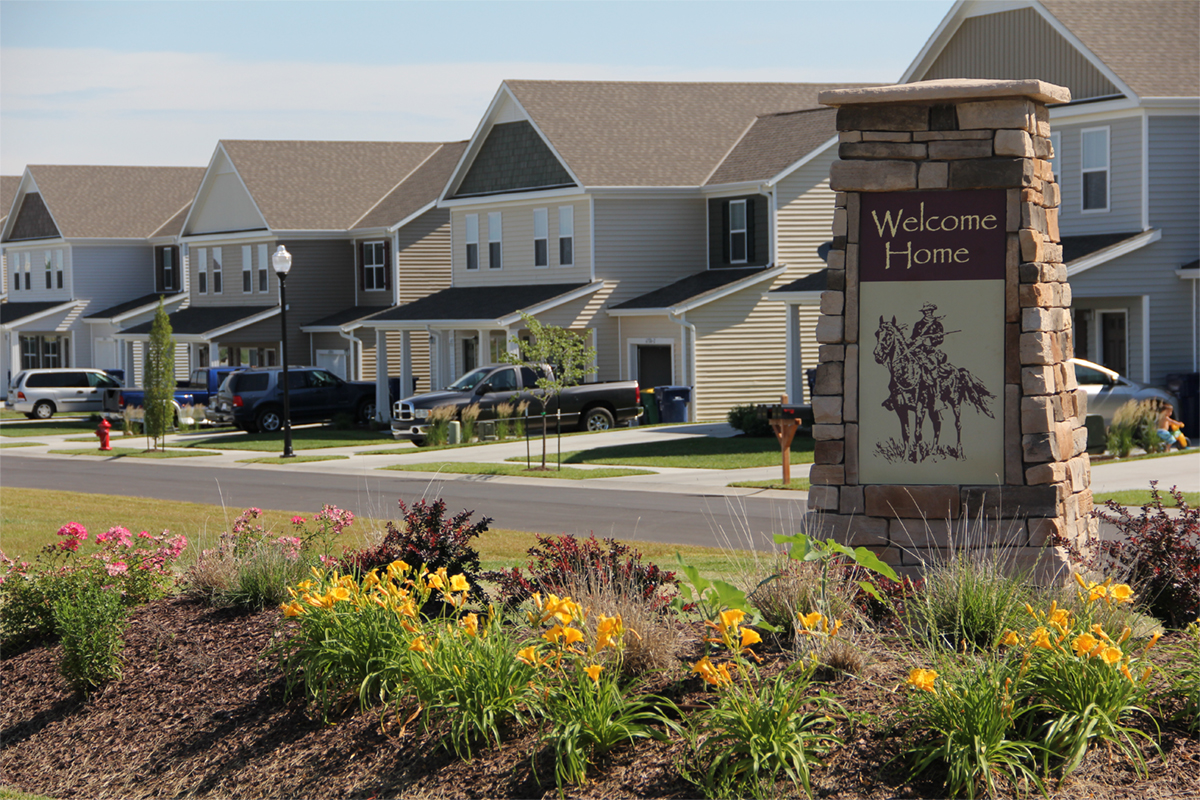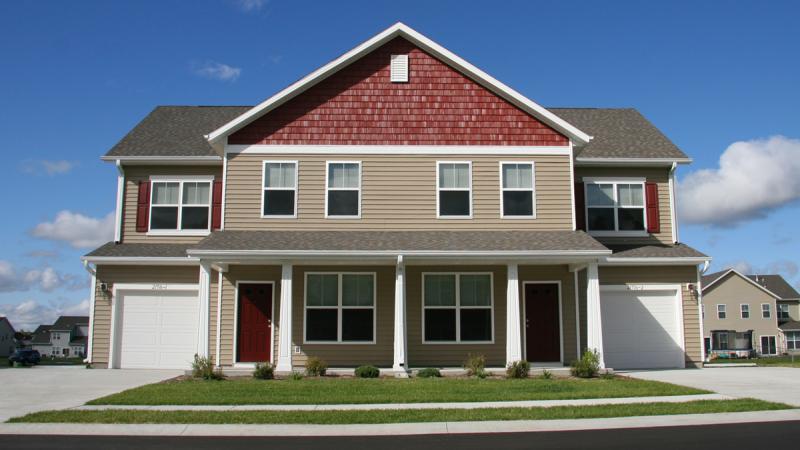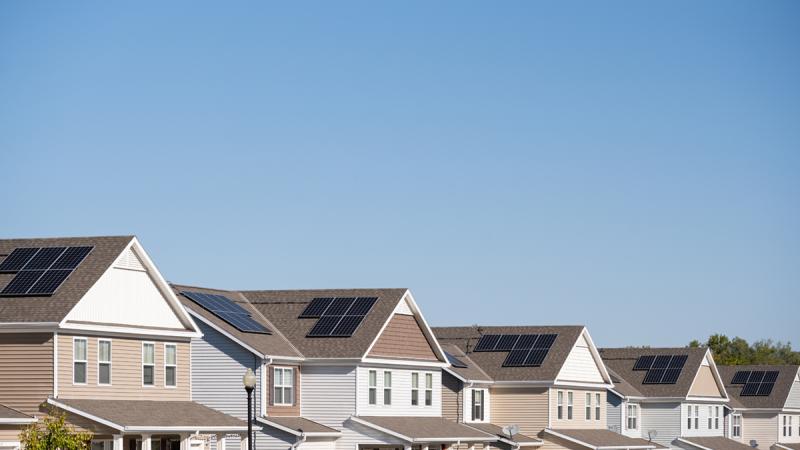When the population of Fort Riley ballooned to 19,000 from 10,000, Corvias worked diligently and with versatility to help establish Fort Riley as a premier installation.
Project Scope
Just one month after Corvias assumed responsibility of approximately 4,000 homes in its partnership with the U.S. Army at Fort Riley, the 1st Infantry Division returned to the installation after being headquartered in Germany for more than 10 years. This historic troop movement re-established Fort Riley as a prominent military installation. The population at Fort Riley quickly grew to nearly 19,000 residents from the initial estimate of 10,000. In the initial development period, more than 2,000 residents were carefully relocated to support the demolition of 1,404 homes, as well as the complicated renovation of 253 homes listed on the National Historic Register. Among the historic structures, Corvias preserved Quarters 123, originally built in 1855 and made famous by General Robert E. Lee, to accommodate modern functionality and the leaders of today’s military. All historic work was performed in close coordination between Corvias, Fort Riley, and other partners including the State Historic Preservation Office (SHPO).
 Corvias’ stormwater and solar initiatives on Fort Riley’s 1,919 acres have been successful in providing positive environmental and economic benefits. Fort Riley’s location next to a 100-year floodplain presented obstacles for the effective management of stormwater runoff, Corvias was able to achieve proper sanitary flows and meet stormwater requirements by utilizing advanced detention and drainage techniques. Additionally, Corvias has deployed 12.3MW of clean and renewable solar power and is expanding the project for a total of 16.6MW, for which the Army can earn 300GWh in total Renewable Energy Credits (RECs)-helping Fort Riley become more energy secure and allowing the partnership to better manage expenditures over the long-term.
Corvias’ stormwater and solar initiatives on Fort Riley’s 1,919 acres have been successful in providing positive environmental and economic benefits. Fort Riley’s location next to a 100-year floodplain presented obstacles for the effective management of stormwater runoff, Corvias was able to achieve proper sanitary flows and meet stormwater requirements by utilizing advanced detention and drainage techniques. Additionally, Corvias has deployed 12.3MW of clean and renewable solar power and is expanding the project for a total of 16.6MW, for which the Army can earn 300GWh in total Renewable Energy Credits (RECs)-helping Fort Riley become more energy secure and allowing the partnership to better manage expenditures over the long-term.
Corvias is deploying approximately 16.6MW of clean and renewable solar power, for which the Army can earn 300GWh in total Renewable Energy Credits (RECs).
Building a Community
Given Fort Riley’s significant population increase and new high-profile position, the partnership focused on providing the amenities necessary to create a strong sense of community. Five community centers were strategically placed throughout the installation to offer recreational and social options. Corvias’ uses four pools, located within the neighborhoods, to offer a seasonal aquatics program, a new and welcome concept for Army families. With more than 20 pools in our military housing portfolio, Corvias has the expertise to operate these facilities efficiently and safely, while considering the enjoyment of the residents.
In addition, Corvias integrated outdoor amenities such as vast green spaces, pavilions, recreational fields, and a 4.6-mile trail system to encourage resident interaction. As part of our flexible and responsive partnership, Corvias accepted a special request from Fort Riley residents to construct a community garden with the help of local organizations, an effort which ultimately received a congratulatory note from Michelle Obama.
Environmental Awareness
 Corvias uses sustainable planning and design strategies to create beautiful, pedestrian-friendly neighborhoods. Ample use of street trees provides both aesthetic and energy-saving benefits, while serving as natural air filters. To further promote energy efficiency, Corvias has installed 12.3MW of roof-mounted solar panels on Fort Riley homes. In support of the Army Climate Strategy, Corvias is adding an additional 4.4 MW of ground mount solar. Integrating clean energy helps manage expenditures, while cost savings are reinvested into additional scope throughout the life of the partnership.
Corvias uses sustainable planning and design strategies to create beautiful, pedestrian-friendly neighborhoods. Ample use of street trees provides both aesthetic and energy-saving benefits, while serving as natural air filters. To further promote energy efficiency, Corvias has installed 12.3MW of roof-mounted solar panels on Fort Riley homes. In support of the Army Climate Strategy, Corvias is adding an additional 4.4 MW of ground mount solar. Integrating clean energy helps manage expenditures, while cost savings are reinvested into additional scope throughout the life of the partnership.
Solutions for Stormwater Infrastructure
Fort Riley is located adjacent to a 100-year floodplain and federal regulations require retention of the floodplain on the partnership’s side of the levee. By utilizing advanced detention and drainage practices, Corvias effectively designed roads and houses on the land. As heavy rainfall and extreme weather continue to be of concern, Corvias has installed mud tracking areas, silt fences, and slope stabilization measures to prevent rilling and soil erosion.
Program Details
- Property management for 3,878 homes and 5 community centers, including day-to-day operations, maintenance, and long-term development
- Installing roof-mounted solar panels on Fort Riley homes
- Program expansion beyond housing to deliver a new elementary school and expand an existing school
| DURATION | 50 years, 2006-2056 |
|---|---|
| PROGRAM SIZE | 3,878 homes/13,951 beds/6,553,276 GSF/1,919 acres |
| INITIAL DEVELOPMENT | $519 million |
| LONG TERM DEVELOPMENT | $1.4 billion in planned replacement/renovation of all housing |
| TOTAL LOCAL ECONOMIC IMPACT | $5.5 billion |
| $1.08 billion | TOTAL PROJECTED TO BE RETURNED TO PARTNER |



